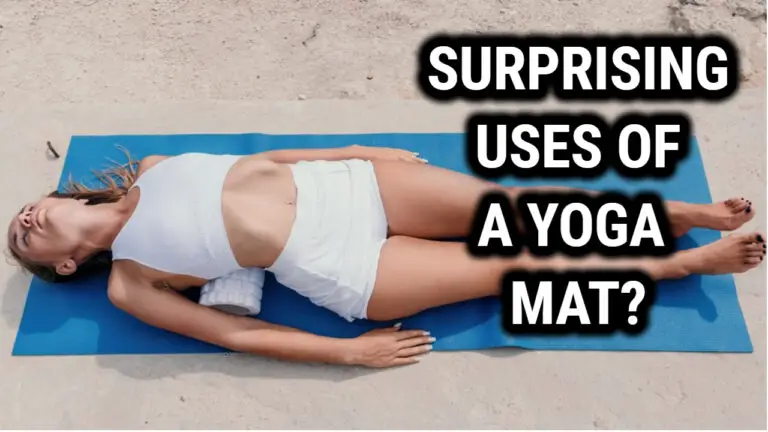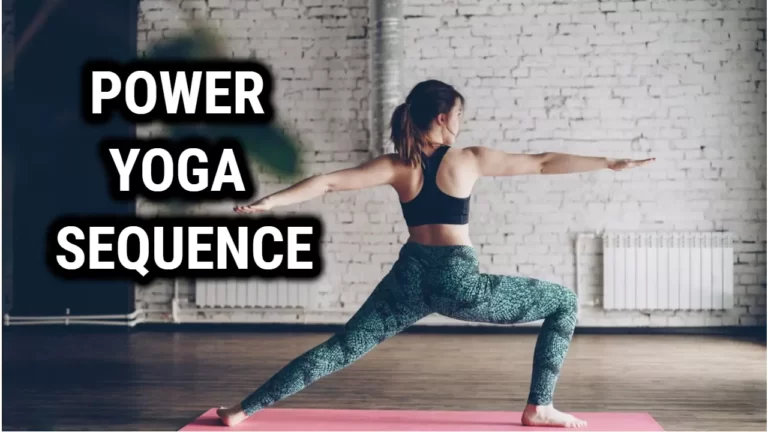Somatic Yoga Poses: Mind-Body Connection through Movement

Somatic yoga is a practice that emphasizes the connection between the mind and body. Unlike traditional yoga, somatic yoga encourages practitioners to listen to their bodies and move in a way that feels natural and intuitive. This practice can be particularly beneficial for those who experience chronic pain or stiffness, as it helps to release tension and increase flexibility.
There are a variety of somatic yoga poses that can be incorporated into a practice. These poses often involve slow, gentle movements that allow practitioners to explore their bodies and connect with their breath. Many somatic yoga poses also involve movements that are designed to release tension in specific areas of the body, such as the hips, shoulders, or neck.
Whether you are a seasoned yogi or new to the practice, somatic yoga poses can be a great way to deepen your mind-body connection and promote overall wellness. By taking the time to listen to your body and move in a way that feels natural, you can experience the many benefits of somatic yoga, from increased flexibility to reduced stress and tension.
What is Somatic Yoga?
Somatics is a movement practice that focuses on how things feel from within. Developed by Thomas Hanna in the 1970s, it helps retrain the brain to allow muscles to relax fully and go back to their natural state, undoing habitual learned movement patterns that can lead to pain.
Somatic Yoga is different from traditional yoga practices in that it emphasizes the flow of subtle energy and encourages intuitive movement. Rather than attending to postures, as in a traditional practice, somatic yoga focuses on moving mindfully through the full range of human movements: running, dancing, sitting, standing, breathing, and meditating.
Somatic Yoga Poses are also categorized as therapeutic exercises, and are coupled with breathing that creates mindfulness of each and every body movement related to the joints and muscles. This helps re-establish the brain to muscle connection, and helps reverse ‘Sensory Motor Amnesia’ in the brain.
Benefits of Somatic Yoga Poses
Somatic yoga poses offer a wide range of benefits for both the body and the mind. Here are some of the most notable benefits:
- Improved mobility: Somatic yoga poses help to improve mobility by releasing tension and increasing flexibility in the muscles and joints. This can help to reduce stiffness and improve range of motion.
- Reduced pain: Somatic yoga poses can help to reduce pain by releasing tension in the muscles and promoting relaxation. This can be particularly beneficial for those suffering from chronic pain or injuries.
- Enhanced body awareness: Somatic yoga poses help to enhance body awareness by encouraging practitioners to focus on the sensations within their body. This can help to improve posture, balance, and coordination.
- Improved breathing: Somatic yoga poses can help to improve breathing by promoting relaxation and reducing stress. This can be particularly beneficial for those suffering from anxiety or respiratory conditions.
- Reduced stress and anxiety: Somatic yoga poses can help to reduce stress and anxiety by promoting relaxation and mindfulness. This can help to improve overall well-being and quality of life.
Overall, somatic yoga poses offer a gentle and effective way to improve physical and mental health. By focusing on the sensations within the body and cultivating self-awareness, practitioners can develop a deeper understanding of their own bodies and promote healing from within.
Common Somatic Yoga Poses
Somatic yoga is a practice that combines traditional yoga postures with somatic movements to help you become more aware of your body and movements. These poses are designed to help you release tension and stress, improve your flexibility, and increase your overall well-being. Here are some common somatic yoga poses:
| Pose Name | Description |
|---|---|
| Constructive Rest Pose | A gentle pose where you lie down with your knees bent and feet flat on the ground. This pose helps release tension in the lower back and hips. |
| Easy Pose Wrist Stretch | A seated pose where you stretch your wrists and forearms. This pose is great for those who type or use their hands for extended periods. |
| Reclined Pose Knee Elbow To Side | A reclined pose where you bring your knees to your chest and twist your legs to one side. This pose helps release tension in the lower back and hips. |
| Legs up the Wall Pose | A restorative pose where you lie down with your legs up against a wall. This pose helps improve circulation and reduce swelling in the legs and feet. |
| Reclined Pose One Knee Twist | A reclined pose where you bring one knee to your chest and twist it to the opposite side. This pose helps release tension in the lower back and hips. |
These poses are just a few examples of the many somatic yoga poses you can incorporate into your practice. Remember to listen to your body and move mindfully. Somatic yoga is about connecting with your body and movements, so take your time and enjoy the process.
Also Read: Sacral Chakra Yoga Poses: Enhancing Your Creativity and Emotional Balance
How to Practice Somatic Yoga Poses
Somatic yoga is a practice that emphasizes the flow of subtle energy in the body. It is a more intuitive form of yoga that encourages you to move in a way that feels natural and comfortable to you. The following are some tips on how to practice somatic yoga poses:
- Start with a warm-up: Before you begin practicing somatic yoga poses, it is important to warm up your body. You can do this by performing some gentle stretches or by practicing some basic yoga poses.
- Focus on your breath: As you move through somatic yoga poses, it is important to focus on your breath. Breathe deeply and slowly, allowing your breath to guide your movements.
- Move slowly: Somatic yoga is all about moving in a way that feels natural and comfortable to you. As you practice somatic yoga poses, move slowly and mindfully, paying attention to how your body feels.
- Use props: Somatic yoga poses are often done on the floor, and it can be helpful to use props such as blankets or pillows to support your body as you move through the poses.
Here are some more examples of somatic yoga poses that you can try:
| Pose | Description |
|---|---|
| Child’s Pose | Kneel on the floor with your big toes touching and your knees hip-width apart. Lower your torso between your thighs and extend your arms out in front of you. |
| Supine Twist | Lie on your back with your knees bent and your feet flat on the floor. Lower both knees to one side, keeping your shoulders flat on the floor. Hold for a few breaths, then repeat on the other side. |
| Seated Forward Bend | Sit on the floor with your legs extended in front of you. Slowly hinge forward from your hips, reaching your hands toward your feet. Hold for a few breaths, then slowly release. |
Remember, the key to practicing somatic yoga poses is to move in a way that feels natural and comfortable to you. Listen to your body and move mindfully, focusing on your breath and the flow of subtle energy in your body.
Precautions and Contraindications
While somatic yoga can provide many benefits, it’s important to be aware of any precautions or contraindications before practicing. Here are some things to keep in mind:
- If you have any injuries or medical conditions, it’s important to consult with your healthcare provider before starting a somatic yoga practice.
- Some poses may not be suitable for individuals with certain conditions, such as high blood pressure, glaucoma, or herniated discs. Always listen to your body and modify or skip poses as needed.
- Be mindful of any pain or discomfort during the practice. Pain is not a normal part of yoga and can be a sign of injury. If you experience pain, stop the pose and seek guidance from a qualified instructor.
- It’s important to practice somatic yoga in a safe and supportive environment. Make sure you have enough space to move freely and use props as needed for support.
Overall, somatic yoga can be a safe and effective practice for many individuals. However, it’s important to approach the practice with caution and awareness of your own limitations and needs. By practicing mindfully and seeking guidance from a qualified instructor, you can enjoy the many benefits of somatic yoga while minimizing the risk of injury or discomfort.
Related Read: Standing Yoga Poses: Improve Balance and Flexibility with These Simple Moves
Conclusion
Practicing somatic yoga poses can be a great way to relax your body and mind. It’s no surprise that more and more people are turning to this practice to improve their overall wellbeing. According to recent studies, over 75% of people who practice yoga report feeling less stress and anxiety in their everyday lives.
It’s important to remember that the key to success is consistency and patience when it comes to developing a regular yoga practice. Somatic yoga poses require you to pay attention to your alignment and breathwork, as well as focus on the connection between your body and mind. With the right materials, sequencing, and knowledge of safety tips for injury prevention, you’ll be able to progress in your practice with ease.
I personally have experienced numerous benefits from regular somatic yoga sessions: improved balance, increased flexibility, deeper relaxation, improved concentration, and so much more! And if you’re looking for an effective way to create a sense of calm in your life – I highly recommend giving this type of mindful movement a try






